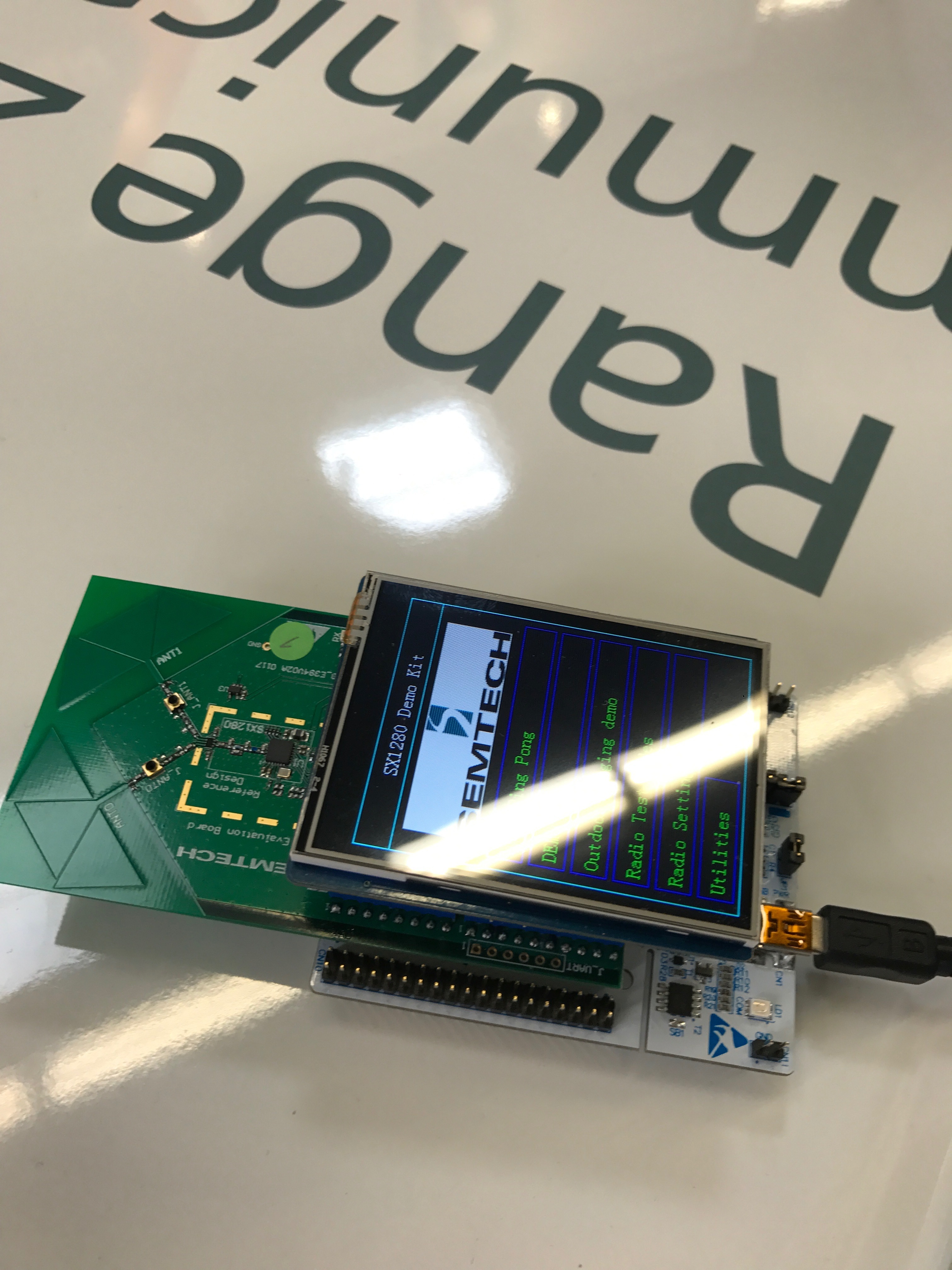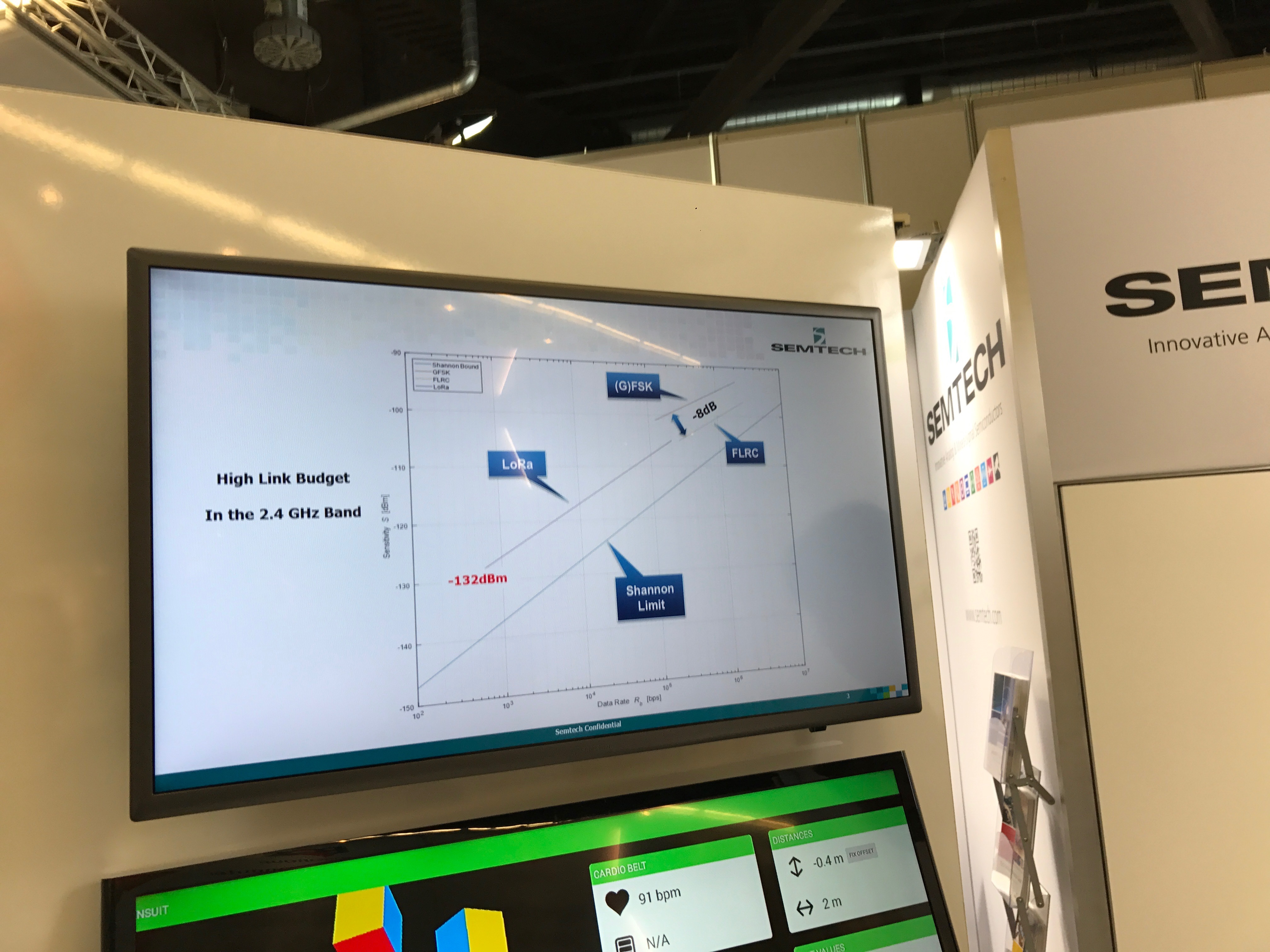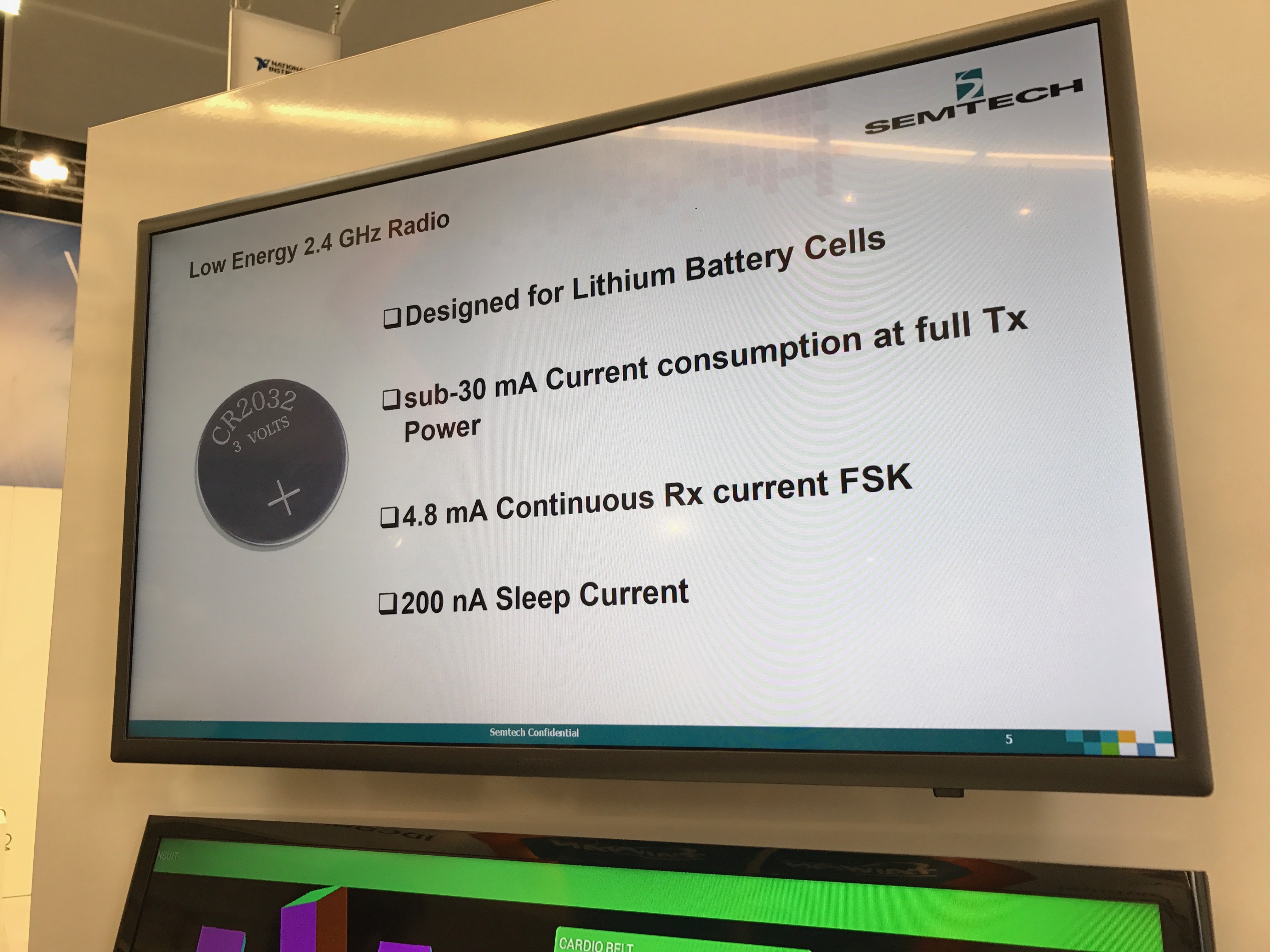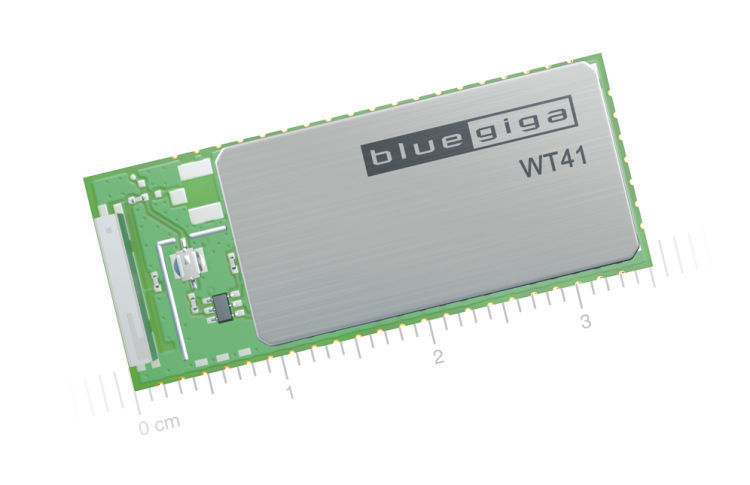This week Semtech is announcing 2.4 Ghz LoRa. They will be coming with more public new soon. But it looks very interesting.



What are your thoughts about this? And how would this fit best in The Things Network?
This week Semtech is announcing 2.4 Ghz LoRa. They will be coming with more public new soon. But it looks very interesting.



What are your thoughts about this? And how would this fit best in The Things Network?
And the datasheet is here:
I guess the most interesting part is
BLE PHY layer compatibility
Other than that, I’d be interested in more information about data rates/limitations, and some performance comparison with pure BLE when it comes to range & bandwidth 
Does this collide with typical WiFi stuff going on on 2.4GHz? One of the good things of LoRaWAN was/is that it not uses the totally overcrowded 2.4GHz frequency, we have already enough things trying to grab airtime on 2.4GHz.
that’s the technical part, but we also used that argument to emphasize why LoRaWAN was that cool and useful. We may need to think about a good way to explain this keeping in mind what we said so far.
edit: i didn’t had time to google in detail, but does this allow OTA firmware updates?
Since you asked ![]() my thoughts on this are that TTN should continue their plans of supporting routing Bluetooth LE - remember Bluetooth 5 is already reaching 2Km+ as is also very low power, even lower than LoRa. That’s a technology that’s already out there on more than a billion devices and NOT locked to a single chip provider.
my thoughts on this are that TTN should continue their plans of supporting routing Bluetooth LE - remember Bluetooth 5 is already reaching 2Km+ as is also very low power, even lower than LoRa. That’s a technology that’s already out there on more than a billion devices and NOT locked to a single chip provider.
Good point.
Quite surprised it is not actual vaporware but product with complete specifications and detailed documentation.
I’m curious about range with LoRa modulation although not expecting longer range than in sub GHz band. Due to higher frequency there could be potentialy shorter time on air resulting in even lower power consumption - something that BLE made so LE.
Question is if sx1280 will be accompanied with concetrator chipset of some kind (possibly multi-band)…
“The new 2.4 GHz wireless RF solution enables point-to-point wireless links that can support custom protocols with configurable data rates up to 2 Mbps.”
https://www.semtech.com/wireless-rf/24ghz-wireless-rf-solution
That’s FSK, for LoRa 2.4Ghz it’s
SF 5: 202 kb/s
SF 6: 122 kb/s
SF 7: 71 kb/s
SF 12: 0.476 kb/s
2.4 should mean cheaper, less obtrusive antennas right? That’s a win for consumer appliances.
I assume we’ll lose a few dB in link budget going with the higher frequency, plus some losses in non-LOS applications.
And will it be safe from WiFi like BLE, or susceptible like ZigBee?
https://www.bluegiga.com/en-US/products/wt41-world-s-longest-range/
Is this a component with chances to be used ?

and this ?
The WT41 is an old Bluetooth Classic only device so that won’t do it - what you want for Things Networks/LoRa type sensors is Bluetooth LE (Low Energy)
The TI design is how you’d increase Bluetooth LE range to 400m to 1Km until 2017: stuck a bit of hardware - a power amplifier (PA+LNA) - at front end to increase TX power to at least 8dB and RX sensitivity.
Now in 2017 we have Bluetooth 5 which enables a lower rate 125kbps “coded PHY” mode. That alone increases the link budget by enough to start reaching 1.6 Km with just +5dBm TX power as TI has shown here using their CC2640r2:
You can still increase the TX power to this to reach even further, 2Km+ as Nordic is showing here with 9dBm on their new nRF52840
The plan is to reach the maximum +12dBm, but of course that comes at increased power consumption .
Still 1.6Km at just +5dBm - which for the TI chip translates to 9mA peak power in TX and 6mA in RX - is pretty good 
Ingenu is somewhat popular in the States and also uses the 2.4GHz band. Seems to play nicely along other devices, and has acceptable range (2-4km). Power requirements are a bit higher though.
What will be the remaining justification for LoRa in urban areas once BLE is there?
edit: (i mean regardless of the LoRa frequency)
You do get a better IoT-ish interface with LoRaWAN, thanks to the concept of applications and how that translates to packet encryption and frame counters. The software infrastructure is done already.
In BLE you only get encryption when the peripheral (node) pairs and establishes a connection with the central (gateway) and most BLE centrals are generally limited to 20 simultaneous connections though you can get more.
The concept of sharing Bluetooth pairing keys securely in the cloud is still a new concept Bluetooth, I think Apple’s AirPods are maybe one of the first wide commercial products to do so.
The closest to LoRa is to use connectionless advertising packets, like iBeacon or Eddystone does which gives potentially limitless number of nodes but then you get no encryption or frame counters for deduplication - you have to do it all yourself.
Of course this is mostly a software problem and 1) Bluetooth is working on solutions already (Mesh in particular) 2) Nothing really stopping you from implementing something like the LoRaMAC on top of BLE
It’s also worth considering that a BLE gateway can be as simple as a mobile app (can even run in the background) or a $6 ESP32.
2.4GHz is universal (basically) on the Regulatory Certification side so makes it easier to make one product and sell world-wide (902-928MHz and 863-869MHz have different rules and of course frequencies which makes its harder on the Regulatory side).
The SX1280 has been out for a while now, has anyone done any range testing ?
My particular interest would be adding one to a node and using the time of flight function for measuring distances, so I would like to know what is likley to be the maximum distance you can measure.
In addition has anyone got one working on Arduino code, I have an SX1280 and can apparently read and write registers, but the datasheet does not appear to list all the registers and what their defaults are.
I do appreciate that most functions are accessed in an API style, but there are registers in there and API functions to read them.
Whilst not directly related to TTN, there are possibilities for the SX1280 when you appreciate that (in the UK at least) there are no duty cycle limits if you use this 2.4Ghz device at 10mW, so it ought to be capable of moving a lot of data around.
I have it working now under my own Arduino library, and here is a report on some link tests, mainly on the ranging capability, but it does contain some details on the capabilities of the SX1280 for long distance links;
A summary here;
Summary - Semtech SX1280 2.4ghz LoRa Ranging Tranceivers
More detail here;
Semtech SX1280 2.4ghz LoRa Ranging Tranceivers
And some tests on the fast LoRa here;
Nice one Stuart  Good Job!
Good Job!